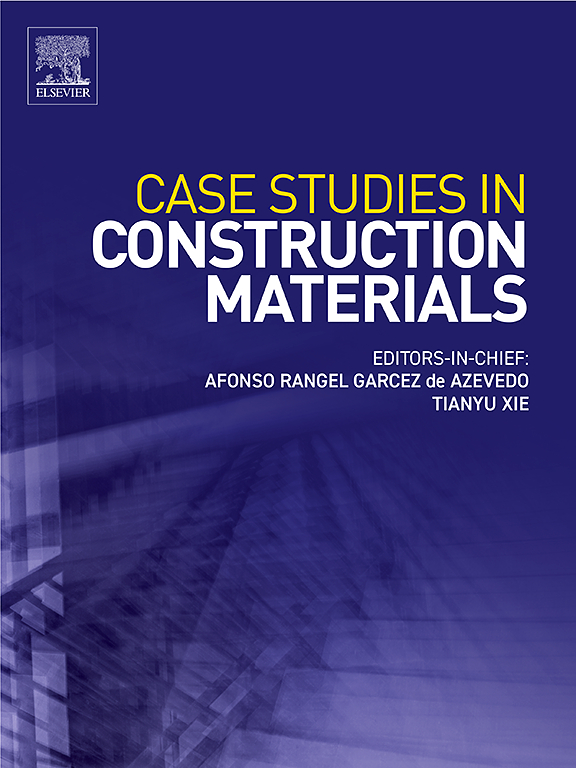富硫酸盐杂散电流环境下混凝土硫酸盐侵蚀行为的实验与模拟评价
IF 6.5
2区 工程技术
Q1 CONSTRUCTION & BUILDING TECHNOLOGY
引用次数: 0
摘要
地铁工程中的钢筋混凝土结构往往处于轨道杂散电流和含硫酸盐、氯离子的地下水包围的复杂环境中。这些因素会导致混凝土劣化。研究了地铁工程中电流强度和硫酸盐浓度对混凝土抗硫酸盐性能的影响。结果表明,增大的电流强度可以加速硫酸盐离子的迁移,导致膨胀水化产物的形成和孔隙的细化。尽管升高的硫酸盐浓度也可以刺激水合作用,但其效果不如增加电流强度。此外,物相分析表明,由于电流的作用,氢氧化钙的衍射峰强度减弱,表明氢氧化钙发生了分解。孔隙分析表明,电流减少了有害孔隙,提高了混凝土的密实度和耐久性。有限元分析为评价地铁工程中混凝土的抗硫酸盐侵蚀性能提供了依据。本文章由计算机程序翻译,如有差异,请以英文原文为准。
Experimental and simulation evaluation of sulfate attack behavior of concrete in sulfate-rich and stray current environment
The reinforced concrete structures within subway projects are often in a complex environment surrounded by the track's stray current and groundwater containing sulfate and chloride ions. These factors can contribute to concrete deterioration. The effects of current intensity and sulfate concentration on the sulfate resistance of concrete in subway engineering are investigated. The results indicate that the heightened current intensity can expedite sulfate ions migration, leading to the formation of swelling hydration products and pore refinement. Despite elevated sulfate concentration can also stimulate hydration, its effectiveness is not on par with that of increased current intensity. Moreover, phase analysis demonstrates a diminish in diffraction peak intensity for calcium hydroxide due to current, indicating the decomposition of calcium hydroxide. Pore analysis reveals that the current reduces harmful pores and improves concrete compactness and durability. Finite element analysis provides a basis for evaluating concrete's resistance to sulfate attacks in subway engineering.
求助全文
通过发布文献求助,成功后即可免费获取论文全文。
去求助
来源期刊

Case Studies in Construction Materials
Multiple-
CiteScore
7.60
自引率
19.40%
发文量
842
审稿时长
63 days
期刊介绍:
Case Studies in Construction Materials provides a forum for the rapid publication of short, structured Case Studies on construction materials. In addition, the journal also publishes related Short Communications, Full length research article and Comprehensive review papers (by invitation).
The journal will provide an essential compendium of case studies for practicing engineers, designers, researchers and other practitioners who are interested in all aspects construction materials. The journal will publish new and novel case studies, but will also provide a forum for the publication of high quality descriptions of classic construction material problems and solutions.
 求助内容:
求助内容: 应助结果提醒方式:
应助结果提醒方式:


